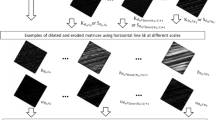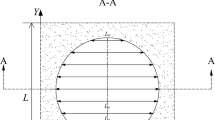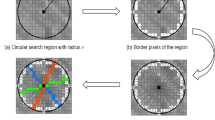Abstract
Surface texturing has a potential to become a cost effective and easy way to improve the tribological performance of lubricated interfacing surfaces. Effects of surface textures on the performance of machine elements as frictional pairs have been investigated over the past two decades. However, despite this research only a limited number of analytical solutions have been proposed as the majority of studies have been experimental and results obtained have not been optimal. This is because the commonly used surface characterization methods are not able to quantify surface textures over a range of scales at different directions and the optimization methods used work only for relatively simple textures and specific constraints imposed on pressure, film thickness, sliding velocity and lubricant rheology. Previous studies have addressed these issues, to some degree, by develo** directional fractal signature methods and unified computational approach for texture optimization. In this article, recent advancements in the development of fractal methods and optimization of surface textures are presented.










Similar content being viewed by others
References
Estion, I.: State of the art in laser surface texturing. ASME J. Tribol. 127, 248–253 (2005)
Mathia, T.G., Pawlus, P., Wieczorowski, M.: Recent trends in surface metrology. Wear 271, 494–508 (2011)
Costa, H.L., Hutchings, I.M.: Hydrodynamic lubrication of textured steel surfaces under reciprocating sliding conditions. Tribol. Int. 40, 1227–1238 (2007)
Wang, X., Yin, J., Wang, X.: Photoinduced self-structured surface pattern on a molecular azo glass film: structure and property relationship and wavelength correlation. Langmuir 27, 12666–12676 (2011)
Miyake, K., Nakano, M., Korenaga, A., Hori, Y., Ikeda, T., Asakawa, M., Shimizu, T., Sasaki, S., Ando, Y.: Nanoscale to macroscale investigation of the frictional properties of physisorbed layers of self-organized phthalocyanine derivatives. Tribol. Lett. 31, 9–15 (2008)
Stout, K.J., Blunt, L.: A contribution to the debate on surface classifications—random, systematic, unstructured, structured and engineered. Int. J. Mach. Tool Manuf. 41, 2039–2044 (2001)
Russ, J.: Fractal Surfaces. Plenum Press, New York (1994)
Whitehouse, D.: Handbook of Surface and Nanometrology, 2nd edn. CRC Press, Boca Raton (2011)
Jiang, L., Zhao, Y., Zhai, J.: A lotus-leaf-like superhydrophobic surface: a porous microsphere/nanofiber composite film prepared by electrohydrodynamics. Angew. Chem. Int. Ed. 43, 4338–4341 (2004)
Lu, X.Y., Zhang, C.C., Han, Y.C.: Low-density polyethylene superhydrophobic surface by control of its crystallization behavior. Macromol. Rapid Commun. 25, 1606–1610 (2004)
Ma, M., Hill, R.M., Lowery, J.L., Fridrikh, S.V., Rutledge, G.C.: Electrospun poly(styrene-block-dimethylsiloxane) block copolymer fibers exhibiting superhydrophobicity. Langmuir 21, 5549–5554 (2005)
Tsukruk, V.V., Ahn, H.-S., Kim, D., Sidorenko, A.: Triplex molecular layers with nonlinear nanomechanical response. Appl. Phys. Lett. 80, 4825–4828 (2002)
Hashimoto, H.: Optimum design of high-speed, short journal bearings by mathematical programming. Tribol. Trans. 40, 283–293 (1997)
Ostayen, R.A.J.: Film height optimization of dynamically loaded hydrodynamic slider bearings. Tribol. Int. 43, 1786–1793 (2010)
Boedo, S., Eshkabilov, S.L.: Optimal shape design of steadily loaded journal bearings using genetic algorithms. Tribol. Trans. 46, 134–143 (2003)
Papadopoulos, C.I., Efstahiou, E.E., Nikolakopoulos, P.G., Kaiktsis, L.: Geometry optimization of textured three-dimensional micro-thrust bearings. ASME J. Tribol. 133, 1–14 (2011)
Pentland, A.: Fractal-based description of natural scenes. IEEE Trans. Pattern Anal. Mach. Intell. 6, 661–674 (1984)
Wolski, M., Podsiadlo, P., Stachowiak, G.W.: Applications of the variance orientation transform method to the multiscale characterization of surface roughness and anisotropy. Tribol. Int. 43, 2203–2215 (2010)
Wolski, M., Podsiadlo, P., Stachowiak, G.W.: Directional fractal signature analysis of trabecular bone: evaluation of different methods to detect early osteoarthritis in knee radiographs. Proc. Inst. Mech. Eng. H 223, 211–236 (2009)
Wolski, M., Podsiadlo, P., Stachowiak, G.W., Lohmander, L.S., Englund, M.: Differences in trabecular bone texture between knees with and without radiographic osteoarthritis detected by directional fractal signature method. Osteoarthritis Cartilage 18, 684–690 (2010)
Stachowiak, G.P., Stachowiak, G.W., Podsiadlo, P.: Automated classification of wear particles based on their surface texture and shape features. Tribol. Int. 41, 34–43 (2008)
Lynch, J.A., Hawkes, D.J., Buckland-Wright, J.C.: A robust and accurate method for calculating the fractal signature of texture in macroradiographs of osteoarthritic knees. Med. Inf. (Lond) 16, 241–251 (1991)
Wolski, M., Podsiadlo, P., Stachowiak, G.W.: Directional fractal signature analysis of self-structured surface textures. Tribol. Lett. 47, 323–340 (2012)
Hendriks, C.L., van Vliet, L.J.: Using line segments as structuring elements for sampling-invariant measurements. IEEE Trans. Pattern Anal. Mach. Intell. 27, 1826–1831 (2005)
Podsiadlo, P., Stachowiak, G.W.: Scale-invariant analysis of wear particle surface morphology I: theoretical background, computer implementation and technique testing. Wear 242, 160–179 (2000)
Stachowiak, G.W., Podsiadlo, P.: 3-D characterization, optimization, and classification of textured surfaces. Tribol. Lett. 32, 13–21 (2008)
Wolski, M., Podsiadlo, P., Stachowiak, G.W.: Effects of information loss in texture details due to the PIFS encoding on load and friction in hydrodynamic bearings. Tribol. Int. 44, 2002–2012 (2011)
Moes, H., Bosma, R.: Design charts for optimum bearing configurations—1: the full journal bearing. ASME J. Lubr. Technol. 93, 302–306 (1971)
Tala-Ighil, N., Maspeyrot, P., Fillon, M., Bounif, A.: Effects of surface texture on journal-bearing characteristics under steady-state operating conditions. Proc. IMechE J. 221, 623–633 (2007)
Caciu, C.A., Decenciere, E.: Numerical analysis of a 3D hydrodynamic contact. Int. J. Numer. Methods Fluids 51, 1355–1377 (2006)
Ma, C., Zhu, H.: An optimum design model for textured surface with elliptical-shape dimples under hydrodynamic lubrication. Tribol. Int. 44, 987–995 (2011)
Rohde, S.M., McAllister, G.T.: On the optimization of fluid film bearings. Proc. R. Soc. Lond. A 351, 481–497 (1976)
Buscaglia, G.C., Ciuperca, I., Jai, M.: On the optimization of surface textures for lubricated contacts. J. Math. Anal. Appl. 335, 1309–1327 (2007)
Hashimoto, H., Namba, T.: Optimization of groove geometry for a thrust air bearing according to various objective functions. J. Tribol. 131, 041704-1–041704-10 (2009)
Alyaqout, S.F., Elsharkawy, A.A.: Optimal film shape for two-dimensional slider bearings lubricated with couple stress fluids. Tribol. Int. 44, 336–342 (2011)
Biros, G., Ghattas, O.: SIAG/OPT views-and news. Forum SIAM Activ. Group Optim. 11, 1–6 (2000)
Guzek, A., Podsiadlo, P., Stachowiak, G.W.: A unified computational approach to the optimization of surface textures: one dimensional hydrodynamic bearings. Tribol. Online 5, 150–160 (2010)
Babuska, I., Suri, M.: The p and h-p versions of the finite element method, basic principles and properties. SIAM Rev. 36, 578–632 (1994)
Biros, G., Ghattas, O.: A Lagrange–Newton–Krylov–Schur method for PDE-constrained optimization. SIAG/OPT Views News 11, 1–6 (2000)
Cupillard, S., Glavatskih, S., Cervantes, M.J.: Computational fluid dynamics analysis of a journal bearing with surface texturing. Proc. Inst. Mech. Eng. J 222, 97–107 (2008)
Acknowledgments
The authors wish to thank the University of Western Australia and the School of Mechanical and Chemical Engineering for support during preparation of the manuscript. A part of the work presented was included in ‘An integrated surface technology design, modeling, and representation’—A topical report, International Energy Agency Cooperative Programme on Advanced Materials for Transportation Applications Annex IV on Integrated Surface Technology, IEA, June 2012.
Conflict of interest
The authors have no conflict of interest for this manuscript.
Author information
Authors and Affiliations
Corresponding author
Rights and permissions
About this article
Cite this article
Podsiadlo, P., Stachowiak, G.W. Directional Multiscale Analysis and Optimization for Surface Textures. Tribol Lett 49, 179–191 (2013). https://doi.org/10.1007/s11249-012-0054-1
Received:
Accepted:
Published:
Issue Date:
DOI: https://doi.org/10.1007/s11249-012-0054-1




